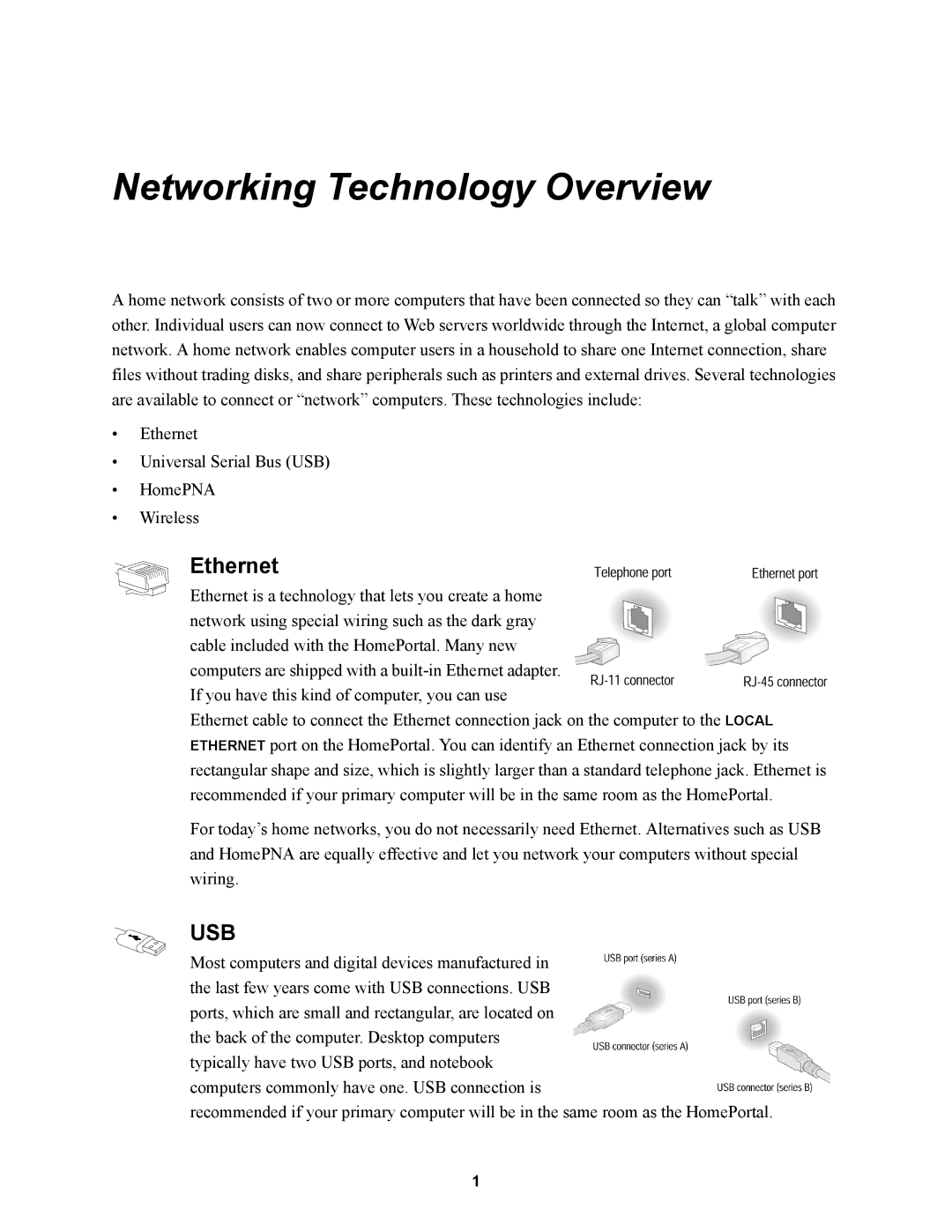
Networking Technology Overview
A home network consists of two or more computers that have been connected so they can “talk” with each other. Individual users can now connect to Web servers worldwide through the Internet, a global computer network. A home network enables computer users in a household to share one Internet connection, share files without trading disks, and share peripherals such as printers and external drives. Several technologies are available to connect or “network” computers. These technologies include:
•Ethernet
•Universal Serial Bus (USB)
•HomePNA
•Wireless
Ethernet
Ethernet is a technology that lets you create a home network using special wiring such as the dark gray cable included with the HomePortal. Many new computers are shipped with a
Ethernet cable to connect the Ethernet connection jack on the computer to the LOCAL ETHERNET port on the HomePortal. You can identify an Ethernet connection jack by its rectangular shape and size, which is slightly larger than a standard telephone jack. Ethernet is recommended if your primary computer will be in the same room as the HomePortal.
For today’s home networks, you do not necessarily need Ethernet. Alternatives such as USB and HomePNA are equally effective and let you network your computers without special wiring.
USB
Most computers and digital devices manufactured in the last few years come with USB connections. USB ports, which are small and rectangular, are located on the back of the computer. Desktop computers typically have two USB ports, and notebook computers commonly have one. USB connection is
recommended if your primary computer will be in the same room as the HomePortal.
1
